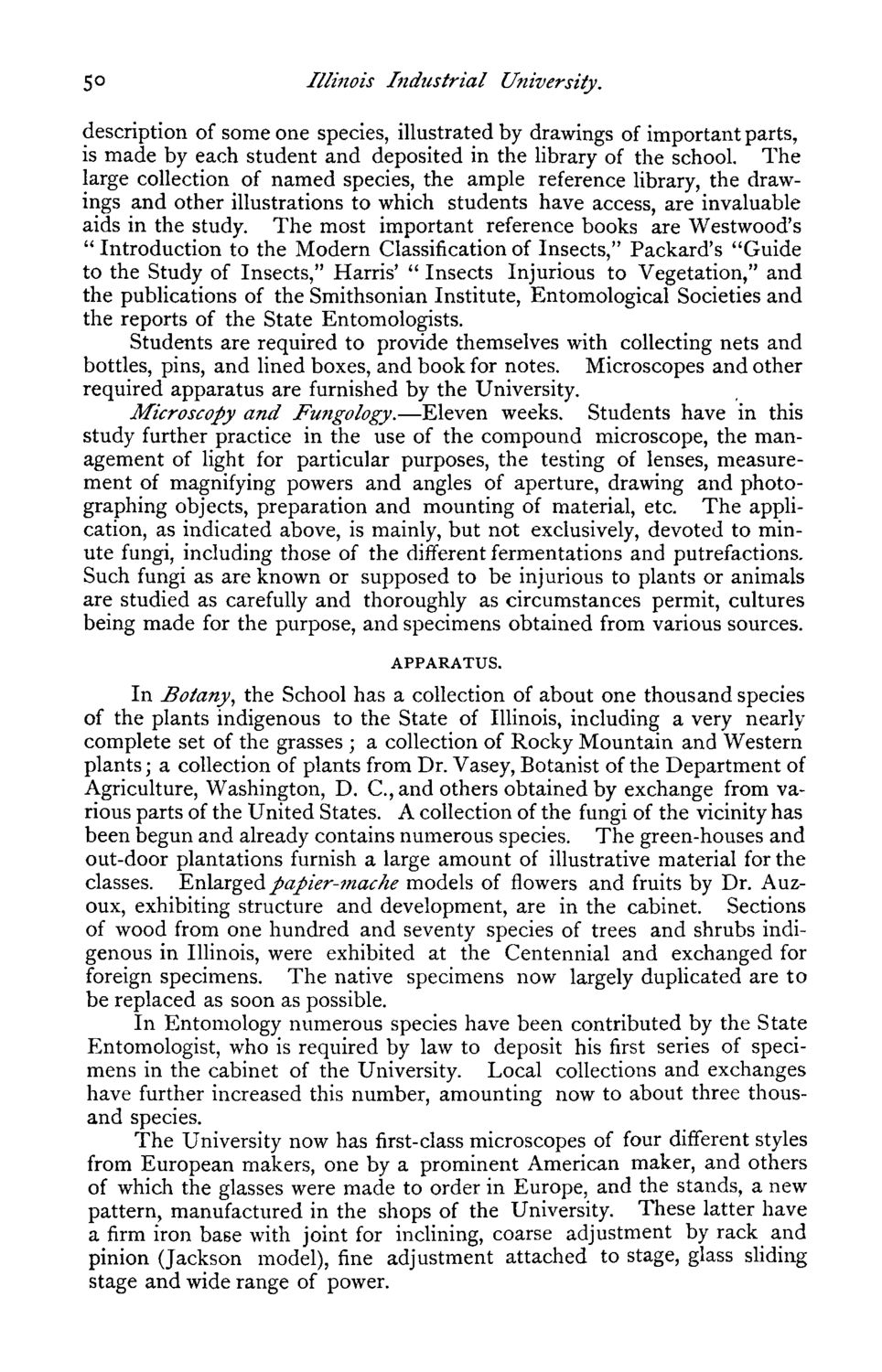| |
| |
Caption: Course Catalog - 1877-1878 Version A
This is a reduced-resolution page image for fast online browsing.

EXTRACTED TEXT FROM PAGE:
$o Illinois Industrial University. description of some one species, illustrated by drawings of important parts, is made by each student and deposited in the library of the school. The large collection of named species, the ample reference library, the drawings and other illustrations to which students have access, are invaluable aids in the study. The most important reference books are Westwood's " Introduction to the Modern Classification of Insects," Packard's "Guide to the Study of Insects," Harris' " Insects Injurious to Vegetation," and the publications of the Smithsonian Institute, Entomological Societies and the reports of the State Entomologists. Students are required to provide themselves with collecting nets and bottles, pins, and lined boxes, and book for notes. Microscopes and other required apparatus are furnished by the University. Microscopy and Fungology.—Eleven weeks. Students have in this study further practice in the use of the compound microscope, the management of light for particular purposes, the testing of lenses, measurement of magnifying powers and angles of aperture, drawing and photographing objects, preparation and mounting of material, etc. The application, as indicated above, is mainly, but not exclusively, devoted to minute fungi, including those of the different fermentations and putrefactions. Such fungi as are known or supposed to be injurious to plants or animals are studied as carefully and thoroughly as circumstances permit, cultures being made for the purpose, and specimens obtained from various sources. APPARATUS. In Botany, the School has a collection of about one thousand species of the plants indigenous to the State of Illinois, including a very nearly complete set of the grasses ; a collection of Rocky Mountain and Western plants; a collection of plants from Dr. Vasey, Botanist of the Department of Agriculture, Washington, D. C , and others obtained by exchange from various parts of the United States. A collection of the fungi of the vicinity has been begun and already contains numerous species. The green-houses and out-door plantations furnish a large amount of illustrative material for the classes. Enlarged papier-mache models of flowers and fruits by Dr. Auzoux, exhibiting structure and development, are in the cabinet. Sections of wood from one hundred and seventy species of trees and shrubs indigenous in Illinois, were exhibited at the Centennial and exchanged for foreign specimens. The native specimens now largely duplicated are to be replaced as soon as possible. In Entomology numerous species have been contributed by the State Entomologist, who is required by law to deposit his first series of specimens in the cabinet of the University. Local collections and exchanges have further increased this number, amounting now to about three thousand species. The University now has first-class microscopes of four different styles from European makers, one by a prominent American maker, and others of which the glasses were made to order in Europe, and the stands, a new pattern, manufactured in the shops of the University. These latter have a firm iron base with joint for inclining, coarse adjustment by rack and pinion (Jackson model), fine adjustment attached to stage, glass sliding stage and wide range of power.
| |